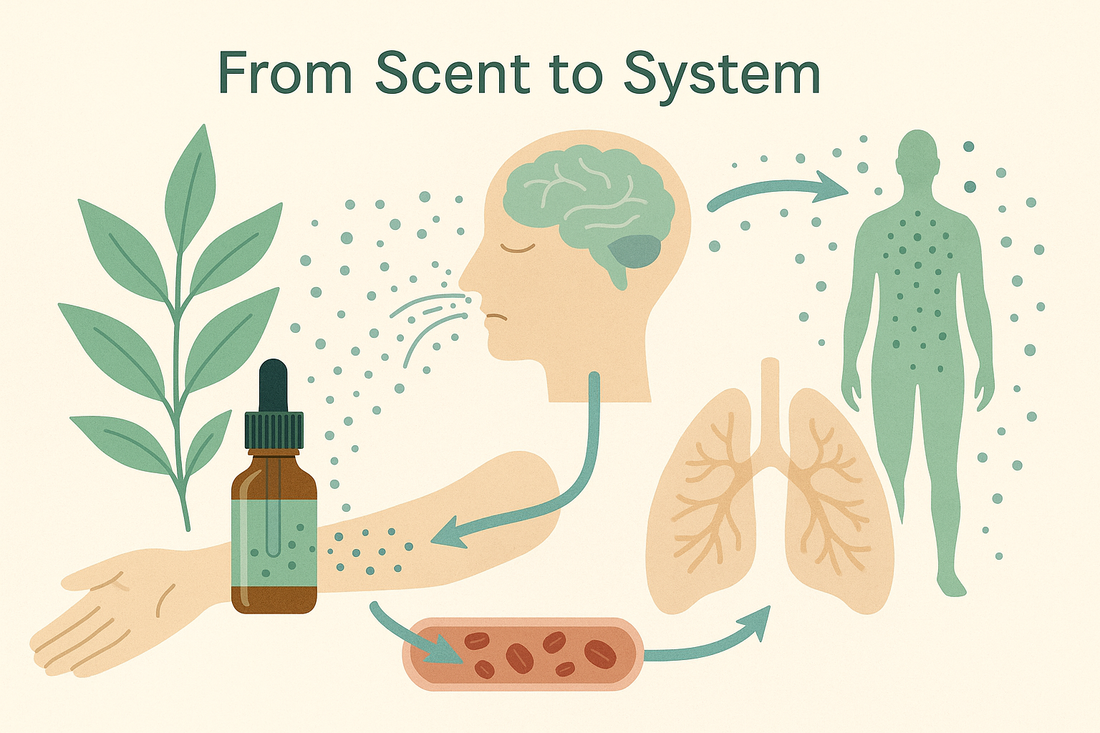
From Scent to System: How Essential Oils Enter the Body
Share
Aromatherapy uses essential oils extracted from many parts of plants — flowers, leaves, fruit peels, and resins. These oils are blended according to individual needs and preferences, and used through massage, application on the skin, or inhalation methods such as room diffusers and steam inhalation.
Because essential oils are too strong to apply directly, they are diluted in carrier oils such as sweet almond or grapeseed oil, usually between 0.5% and 5% depending on age and condition. For example, for facial oils, a 1% dilution is common — this means adding 6 drops of essential oil to 20ml of carrier oil.
When applied to the skin, diluted essential oils are absorbed through the skin and can be detected in the bloodstream in about 20 minutes. Once circulating, their molecules travel throughout the body, supporting cellular functions and helping to ease certain discomforts.
Inhalation, such as through steam, works in a different but complementary way. Scent molecules stimulate the olfactory system and connect directly to the limbic system of the brain — the area that plays a central role in emotions and hormone regulation. At the same time, inhaled molecules also enter the lungs and bronchial passages, reaching the bloodstream and acting on the respiratory mucosa, which can help ease breathing.
This is how essential oils are taken into the body and gently influence the whole system.
✨ In the next article, I’ll introduce some of the main categories of therapeutic actions that essential oils are known for.
